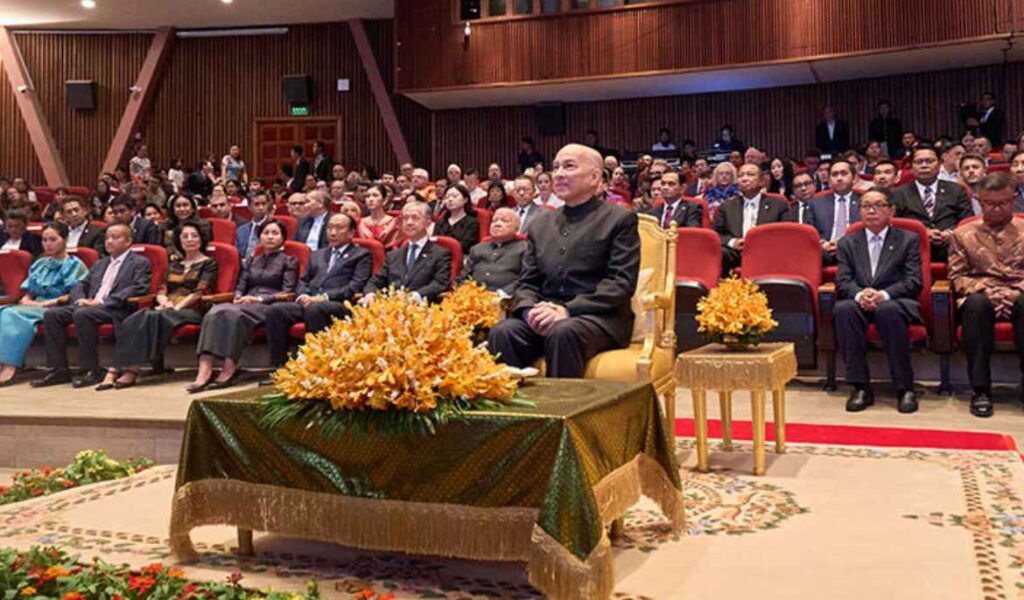King Norodom Sihamoni presided over the premiere of Zhou Daguan in the Kingdom of Chenla, a theatrical performance dedicated to the historical relationship between Cambodia and China on Saturday.
The premiere had been held at the Chaktomuk Conference Hall, one day before it was open to the public yesterday. The event saw the presence of the Chinese Ambassador to Cambodia, Wang Wenbin; Education Minister Hang Chuon Naron; and other senior government officials.
Zhou Daguan in the Kingdom of Chenla portrays a historical perspective of Cambodia during the Angkor period between 1296 and 1297, through the travels of Zhou Daguan, a Chinese diplomat of China’s Yuan dynasty who documented his accounts of the Khmer people, the temples and customs of Cambodia and the Angkor temple complexes.
The play takes the audience back to this fascinating era of Cambodian history, blending historical, cultural and emotional elements. It showcases traditional Khmer dance, classical pinpeat music, and martial arts performances, reflecting the richness of Cambodian heritage.
The 15 scenes of the performance were scripted by Prince Sisowath Tesso and jointly directed by Professors Tith Sarith and Suong Sophak. The production was a collaboration with the Royal Ballet of Princess Buppha Devi and was supported by the Chinese Embassy in Cambodia.
The play was organised with the purpose of strengthening relations between the Cambodian and Chinese people, aligning with the vision of 2024 as the “Year of Cultural, Civilisational, and Interpersonal Exchanges” between the two nations.
Ambassador Wang posted on social media his delight for the performance.
“It was a great honour to watch the premiere of “Zhou Daguan in the Kingdom of Chenla” with His Majesty the King! Much appreciation for the wonderful performances of the Cambodian artists, which showcased the everlasting friendship between the peoples of China and Cambodia by bringing it to life,” he wrote.
Cambodia and China have built very strong bilateral ties, but this binding relationship is not the result of just a few years of engagement. Despite no common border between them, the two nations have had centuries of historic, cultural, and commercial relationships. In 2006, a group of Vietnamese fishermen discovered the wreckage of a 15th-century Chinese trading ship laden with ancient pottery and other artefacts near Koh Sdech, off the coast of Koh Kong province. The discovery is just one example of countless artefacts found in Cambodia, and evidence of the commercial relations between the Khmer Empire and China.
In the meantime, in China’s Nanjing City, a museum showcasing the artistic works of the Ming Dynasty displays a strong Cambodian connection. Some artefacts in this museum have been seen as new evidence of a long diplomatic relationship between China and the Angkor kingdom dating back 700 years.
Also, a massive replica of a painting made by a Chinese official under the orders of the Ming Dynasty emperor contains historical text in ancient Chinese characters describing the diplomatic and trade relationships between China and Angkor in the 14th century. Similarly, a bas relief at Angkor Wat also displays economic activities between Cambodian and Chinese people during the Khmer Empire.



